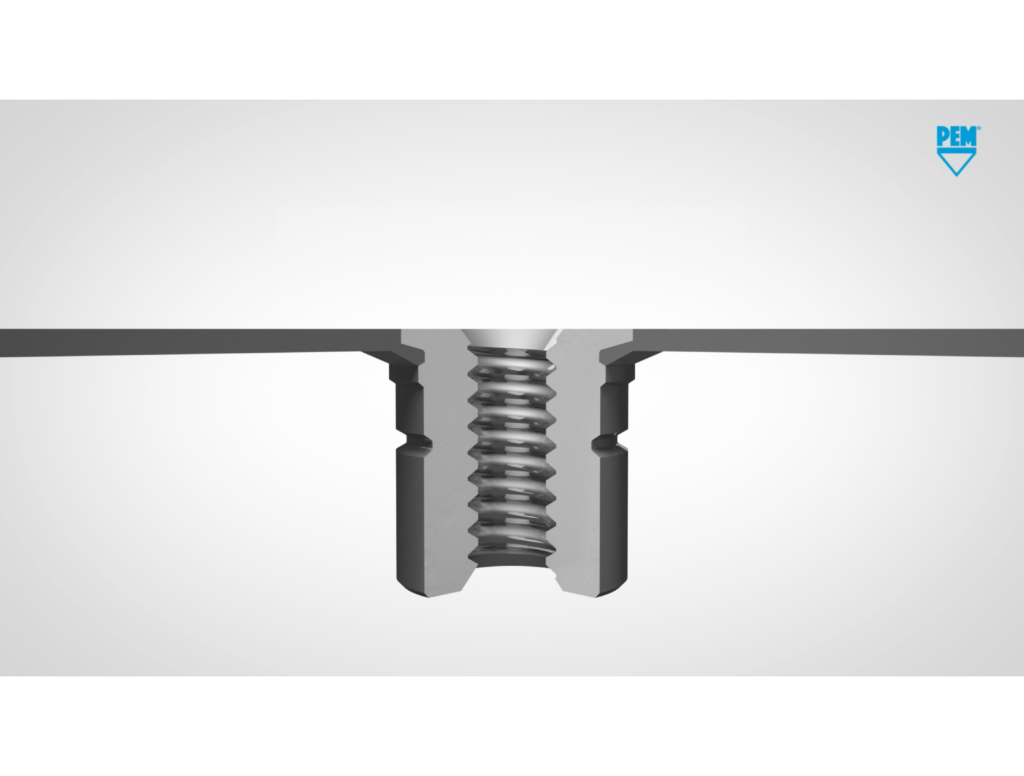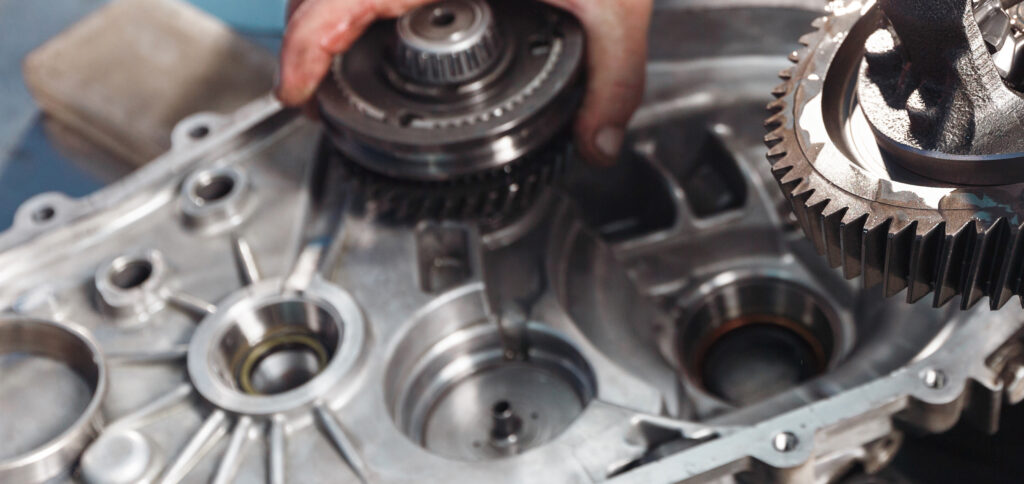Standoffs | KEYHOLE® Standoffs
Table of Contents
Product Pages
Standoffs
KEYHOLE® Standoffs
SNAP-TOP® Standoffs
Nuts
Clinch Nuts
Floating Nuts
Blind Nuts
Flush Nuts
Locking Nuts
Rivet Nuts
Studs
Locating Pins
Captivated Screws
Simple Screws
Spring-Loaded Screws
Knob Cap Screws
Threaded Inserts
Press-In Inserts
Molded-In Inserts
Ultrasonic/Heat-Staking Inserts
Compression Limiters
Specialty Fasteners
Cable Tie Mounts
TACKPIN®
Panel-to-Panel Fasteners
Right Angle Fasteners
Attachment Technologies
Overview
KEYHOLE® standoffs have a unique attachment feature on the top end of the body. The common design includes a retaining disk atop a narrow column, which sits on a shoulder that is slightly larger in diameter than the disk. The opposite side of the fastener can still employ a variety of attachment technologies as the keyhole design is rotationally symmetric and doesn’t experience torque in application. Given no requirement to resist torque, round bar stock is the most common bar for keyhole standoffs.
Application
The term ‘keyhole’ comes from the shape of the hole in the panel (usually a PC Board) that resembles a keyhole in a door (a circular hole with one protruding cut). The diameter of the hole accepts the retaining disk and sits on the shoulder, while the width of the cut straddles the column as the PCB is slid into place. For simplified disassembly, a PC Board can have three corners supported by KEYHOLE® standoffs while a threaded standoff supports the last corner. This way, only one screw is needed to secure all three axes of movement.
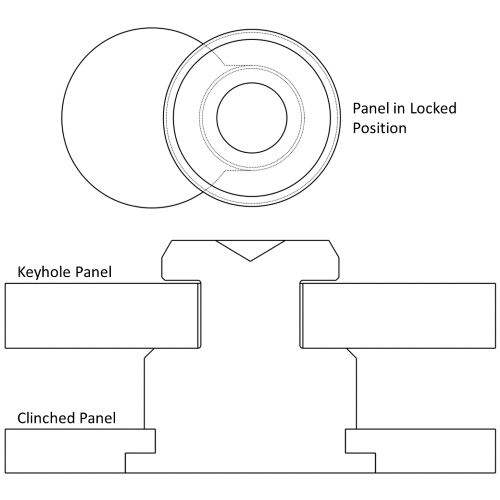
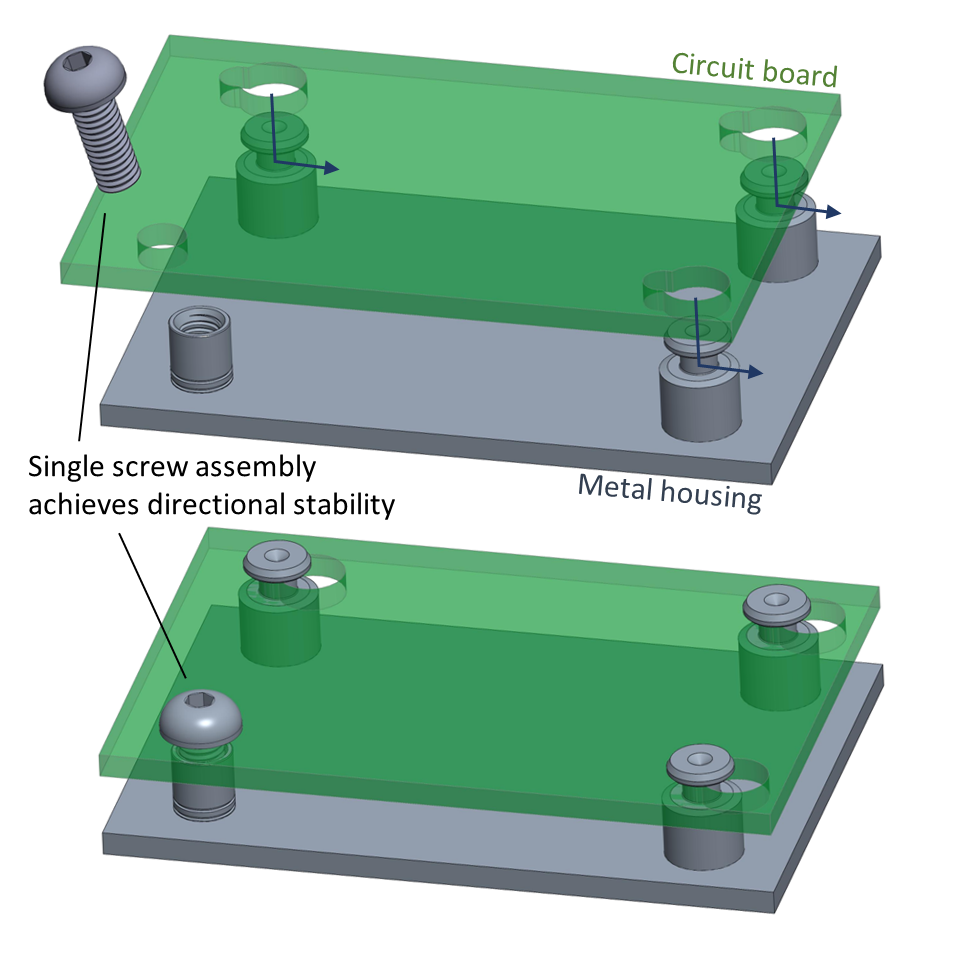
3-keyhole, 1-screw application helping minimize loose hardware without sacrificing stability.
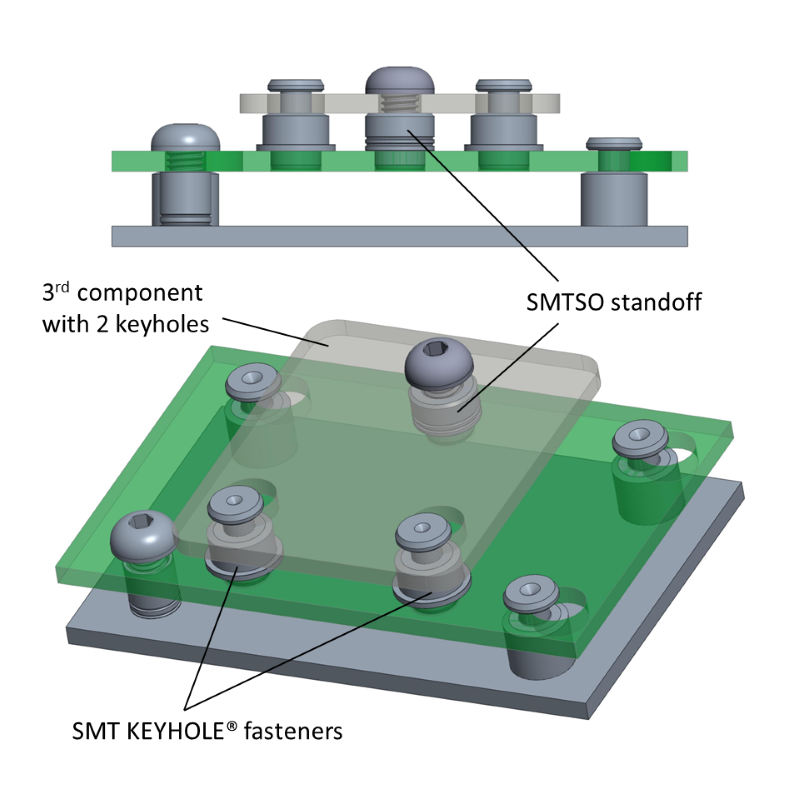
A third component is mounted to the assembly with a 2-keyhole, 1-screw panel mounting the fasteners to the PCB via surface mounting.
Alternative Solutions
Using the same application, all four corners could be supported with threaded standoffs to minimize part variety, but the time associated with threading and unthreading all four connections makes for less convenient assembly. The combination of KEYHOLE® and threaded standoffs can speed up production assembly while facilitating repeated disassembly. Because of the movement required for assembly, the use of just KEYHOLE® standoffs will not fully secure a PC Board.
Common Attachment Technologies
Like regular threaded standoffs, KEYHOLE® standoffs can be attached to panels through the self clinching method. They can also be installed into PC Boards via broaching or surface mount technology (SMT) for stacks of multiple layers of panels or components.
Relevant products from PEM:
Explore PEM brand KEYHOLE® standoffs in our Product Finder:
To learn more about our products, visit the SK Datasheet for self-clinching and K Datasheet for broaching and SMT options.
Have a project?
Let’s get started.
Talk to us about creating a custom part, tool or process. We are equipped to help you to take on and solve your biggest engineering challenges.
Talk to us about creating a custom part, tool or process. We are equipped to help you to take on and solve your biggest engineering challenges.

Looking for CAD Downloads?
Access to the original PEM Catalog and CAD downloads.
Have a question?
Talk to an Engineer.
See what’s possible.
Connect with a PEM® engineering expert today and discover a reliable, cost-effective fastening solution for your challenging applications.
Or Call Us: 1-800-342-5736



